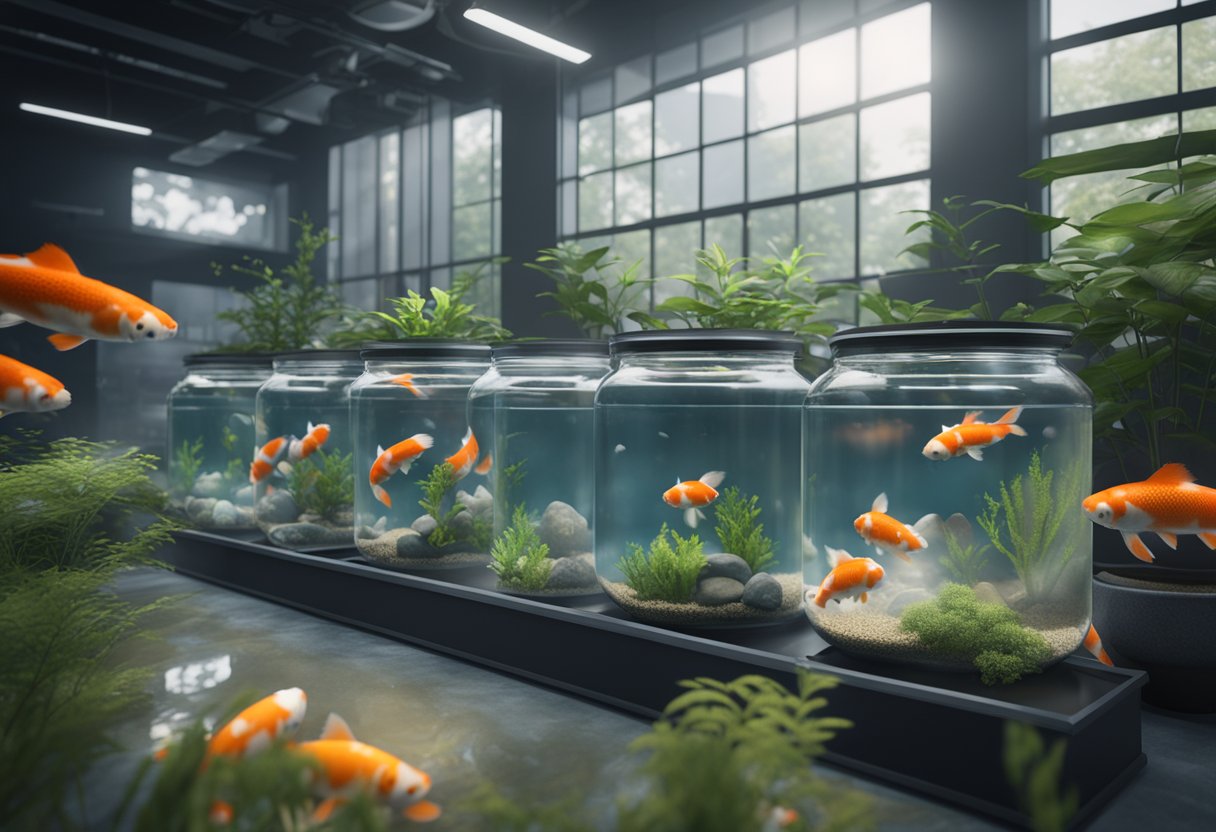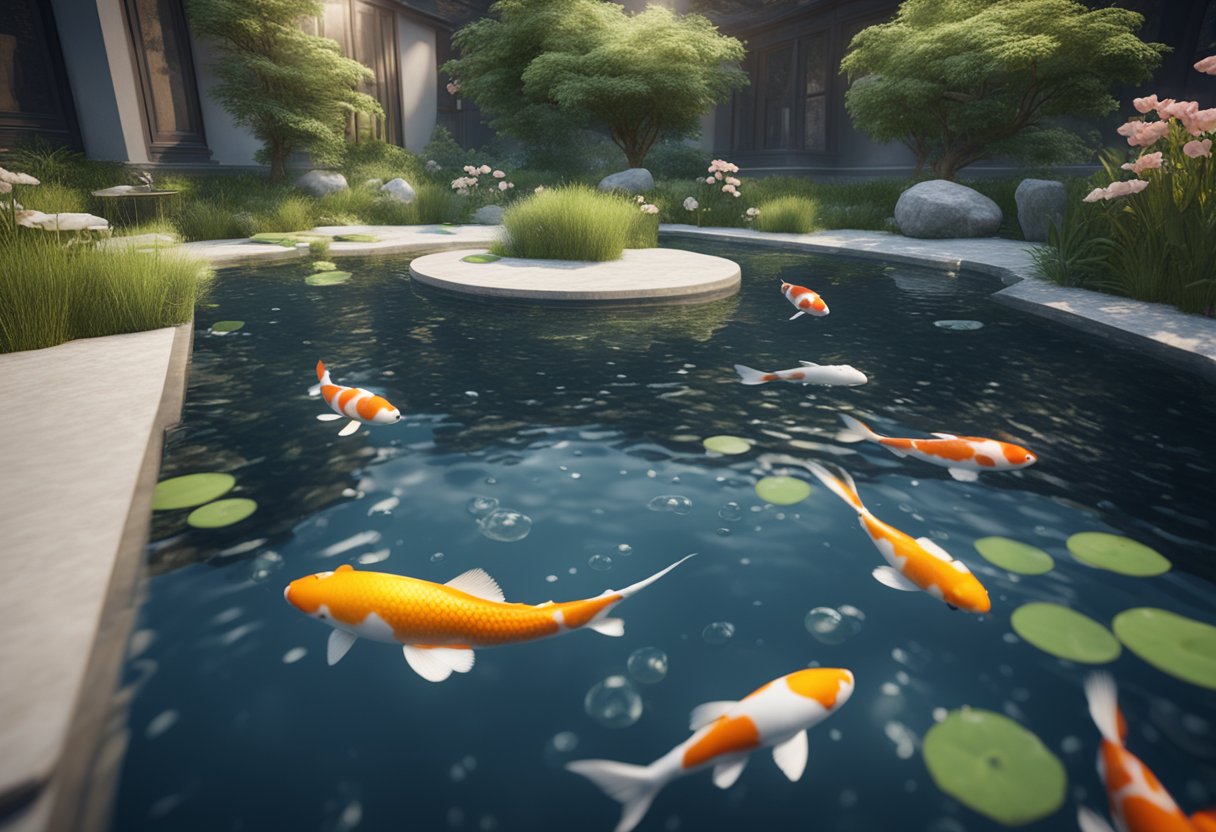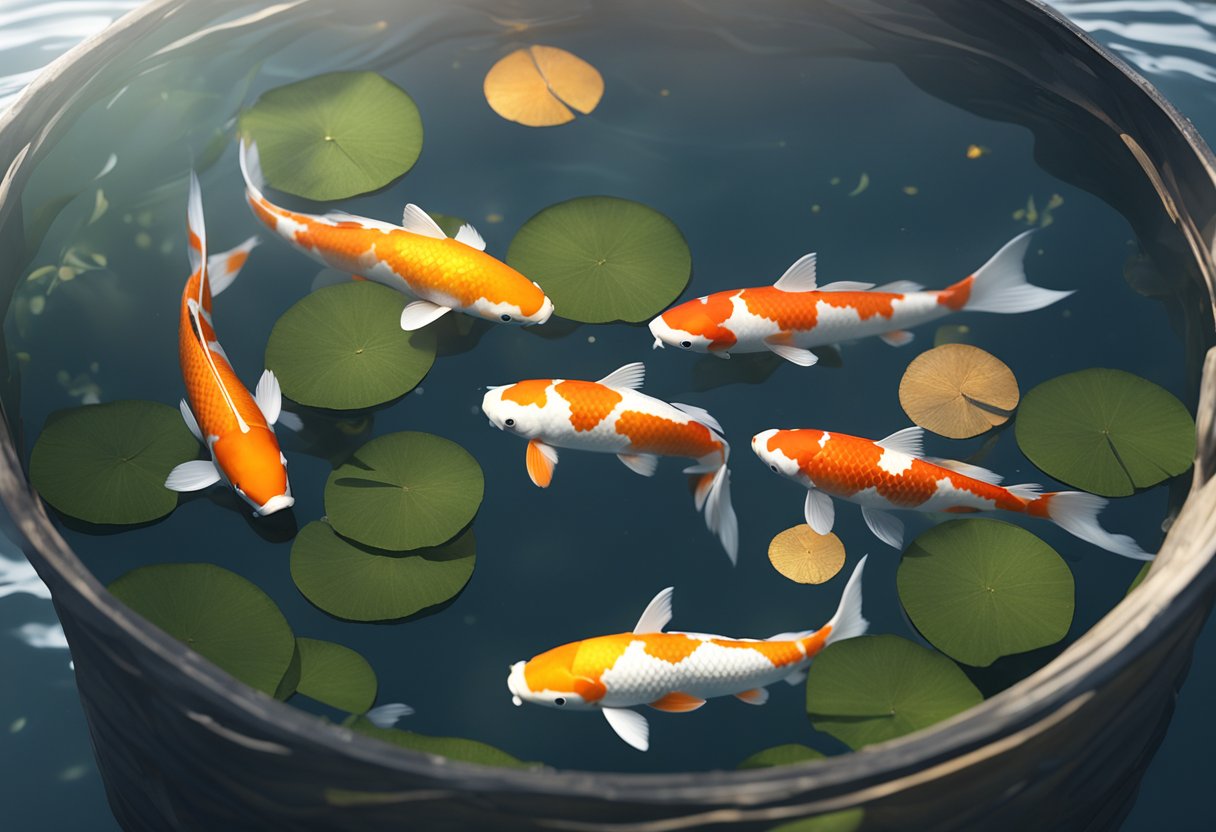Effective Koi Algae Control Methods Unveiled

Controlling algae in your koi pond is essential for maintaining a clear and healthy aquatic environment. In this article, we will explore effective koi algae control methods and pond algae treatment options to help you keep your pond pristine.
Algae growth can be a common issue in koi ponds, and understanding the factors that contribute to its growth is crucial. By implementing preventative measures and regular pond maintenance, you can minimize algae occurrence and create an optimal environment for your vibrant koi.
There are various methods available for algae control, including mechanical, chemical, and biological approaches. Mechanical methods involve physically removing algae from the pond, while chemical methods utilize algae control products for treatment. Additionally, biological methods involve introducing beneficial organisms to naturally suppress algae growth.
Proper water quality management, including filtration, aeration, and regular water testing, is vital for preventing algae growth. Controlling sunlight exposure through shading, strategic plant placement, and the use of UV sterilizers can also play a significant role in algae control.
In this article, we will also explore natural remedies for algae control, such as barley straw, beneficial bacteria, and hydrogen peroxide treatments. These options provide alternatives for those who prefer natural methods.
By incorporating these koi algae control methods and following the algae prevention and control tips provided, you can ensure a clear and vibrant pond for your beloved koi. Let’s dive in and discover the most effective strategies for algae control in your koi pond.
Understanding Algae Growth in Koi Ponds
Before diving into the different control methods, it is important to understand why algae grows in koi ponds. By grasping the factors that contribute to algae growth, pond owners can implement preventative measures to minimize its occurrence and create a visually appealing and healthy environment for their beloved koi.
- Poor Water Quality: Algae thrives in ponds with high levels of nutrients like nitrates and phosphates. These nutrients can enter the pond through excess fish food, decaying plant matter, or runoff from fertilized lawns. Regular water testing and proper filtration can help maintain optimal water quality and prevent excessive nutrient buildup.
- Excessive Sunlight: Sunlight is a catalyst for algae growth, particularly in ponds that receive direct sunlight for extended periods. Sunlight provides the energy for algae photosynthesis and promotes its rapid multiplication. To control algae growth, pond owners can create shade using plants, strategically place pond covers, or utilize UV sterilizers to limit the amount of sunlight reaching the water.
- Poor Circulation and Aeration: Stagnant water provides a favorable environment for algae to thrive. Insufficient circulation and aeration can lead to the accumulation of stagnant areas in the pond, creating ideal conditions for algae growth. Installing proper pond pumps and aerators can help maintain water movement and oxygen levels, inhibiting algae colonization.
- Limited Beneficial Organisms: In a balanced ecosystem, beneficial organisms such as beneficial bacteria and algae-eating fish help control algae growth. However, in some cases, the lack of these organisms or their overconsumption by predatory fish can disrupt the natural balance and give algae a competitive advantage. Introducing algae-eating fish, like plecos, or beneficial bacteria can help keep algae populations in check.
- Improper Plant Balance: Aquatic plants can contribute to algae growth if not properly managed. While plants provide oxygen and compete with algae for nutrients, an overabundance of plants can create shaded areas that promote stagnant water and contribute to algae growth. It is crucial to maintain a balanced plant population and regularly remove excess foliage to prevent excessive algae growth.
By addressing these underlying factors, pond owners can proactively prevent algae growth and ensure a thriving and visually pleasing koi pond. The next sections will delve into various algae control methods, ranging from mechanical to chemical and biological approaches, offering effective strategies to combat algae growth and maintain a vibrant pond ecosystem.
Regular Pond Maintenance for Algae Control
Keeping up with regular maintenance tasks is crucial for controlling algae in your koi pond. By implementing effective maintenance practices, you can prevent algae growth and maintain a clean and healthy pond environment for your cherished koi.
1. Monitor Water Quality
Regularly test the water parameters in your koi pond to ensure optimal conditions for your fish and discourage algae growth. Maintain proper pH levels, ammonia and nitrate levels, and ensure adequate oxygenation through the use of aeration systems.
2. Perform Regular Water Changes
Regular water changes help remove excess nutrients and organic debris that contribute to algae growth. Aim to replace approximately 10-15% of the pond water every 1-2 weeks, ensuring that the new water is free from contaminants.
3. Clean Pond Filters and Equipment
Dirty or clogged filters can become breeding grounds for algae. Clean and maintain your pond filters, skimmers, and pumps regularly to ensure optimal performance and prevent the accumulation of organic matter that can fuel algae growth.
4. Remove Debris
Regularly remove leaves, twigs, and other debris from the surface of your pond. Decaying organic matter can release nutrients into the water, promoting algae growth. Use a fine mesh net or skimmer to keep the surface clean.




